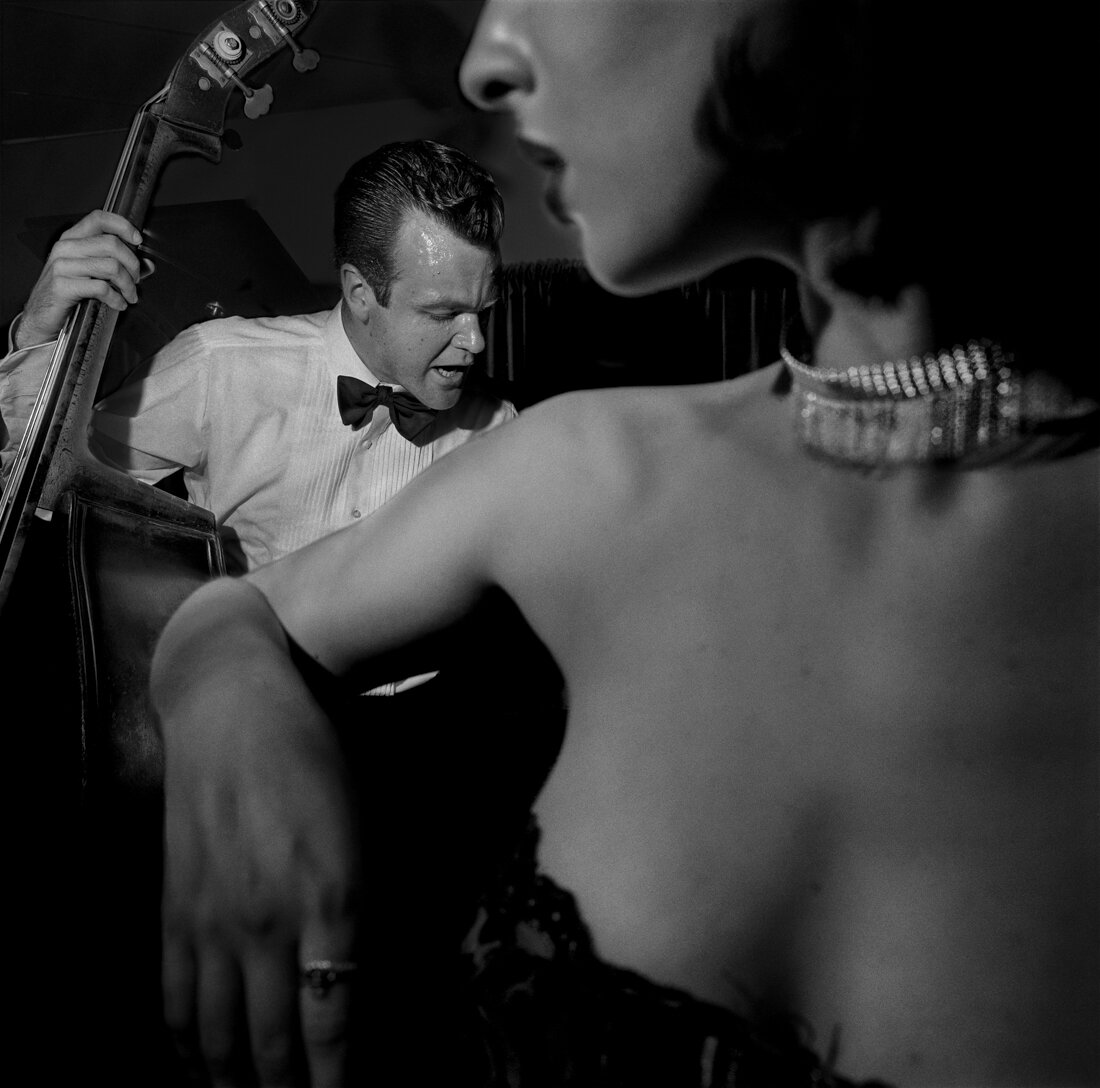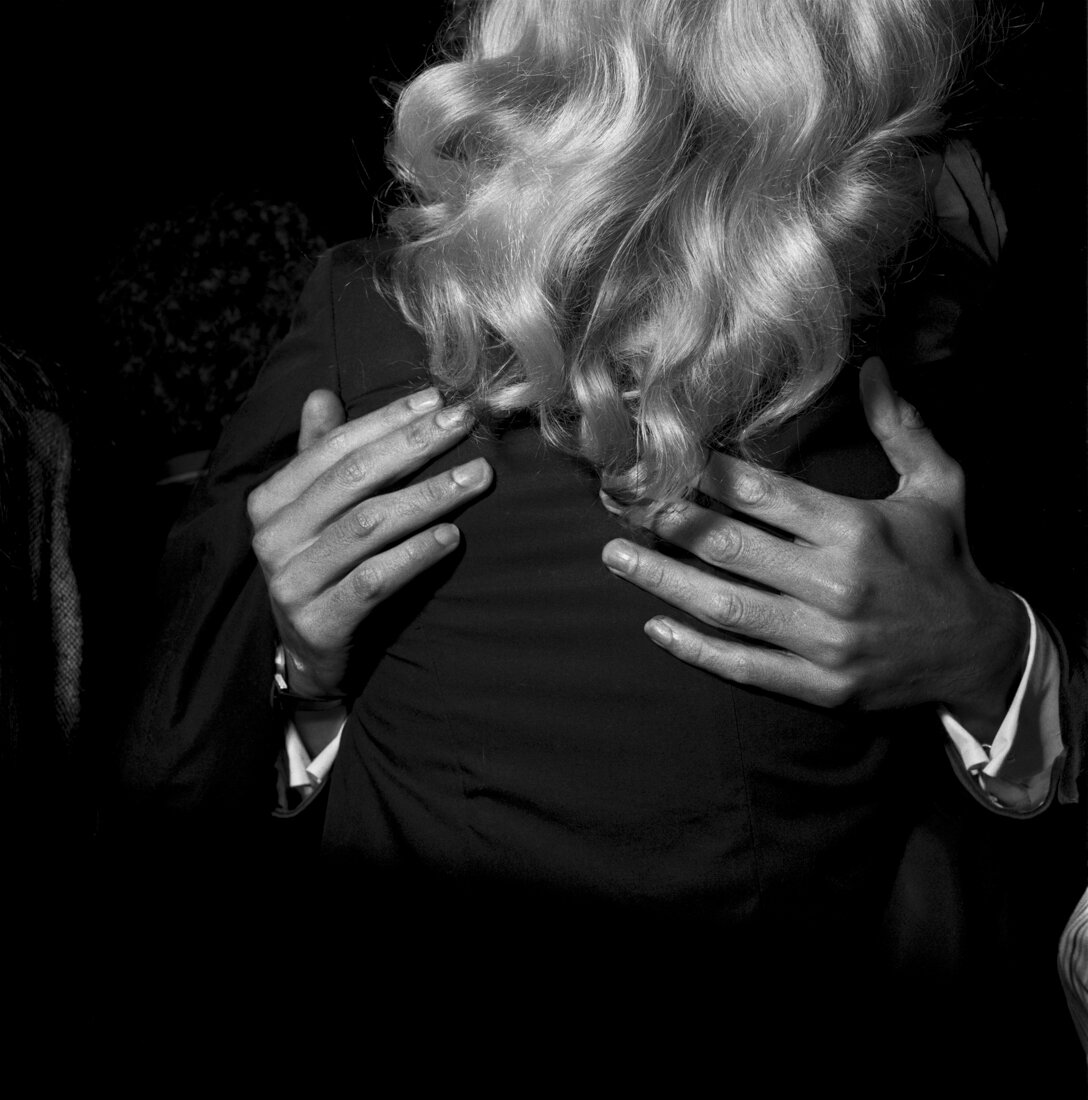Exhibition Review: Larry Fink’s ‘Retrospective’
GQ Party August 1997, Copyright Larry Fink,Courtesy Galerie Bene Taschen
By Sara Beck
Inside Larry Fink’s photographs is an intriguing sociological study; as a silent observer among various social groups, the American photographer captured the often overlooked nuances that both unite us and set us apart. Fink is most famous for his images of parties, often ones attended by the social elite; on numerous occasions, he was invited as either a guest or official photographer to such events for the purpose of documenting the party-goers’ more intimate moments. Galerie Bene Taschen in Cologne, Germany, is now exhibiting a retrospective that will remain open through April 3, 2021, honoring Fink’s 65-year-long photography career.
Fink Stag Party, March 1994, Copyright Larry Fink, Courtesy Galerie Bene Taschen
Fink’s interest in sociological perspectives was developed as he studied at The New School for Social Research in New York City. Each of his projects focuses on a particular social group: in “The Vanities,” Fink’s photographs of Hollywood celebrities created over years of attending parties, are put together to offer up commentary on the guests’ social status and how said status can be played up or minimized by how they engage with their environment.
Benefit The MoMA New York NYC June 1977, Copyright Larry Fink, Courtesy Galerie Bene Taschen
“Somewhere There’s Music” documents Fink’s encounters with famous jazz musicians while simultaneously expressing an era’s underlying socio-political issues. His images of boxers both in and outside of the ring function similarly, displaying the nuanced emotions the athletes expressed in various situations. Across all of his images, Fink’s distinct photographic style remains visually striking, applying principles of light and contrast often attributed to Baroque masters, such as Rembrandt and Caravaggio, to the photographic medium.
54 New York, New York, May 1977, Copyright Larry Fink, Courtesy Galerie Bene Taschen
One of Fink’s most renowned projects, “Social Graces,” juxtaposed photographs from elite art openings, galas and private receptions with photographs of a working-class family, the Sabatines, from Martins Creek, Pennsylvania. When Fink connects two vastly different worlds such as these, he does so non-judgmentally. The result is an exploration of contrasting experiences that does not take place from a moral high ground, but rather seeks to demonstrate how the smaller aspects of life, which make us human, are universal—shared between us regardless of social standing.
Peter Beard Opening Party New York, New York, November 1977, Copyright Larry Fink, Courtesy Galerie Bene Taschen
As a fly on the wall, Fink was able to catch subtle interactions that humanized his subjects, who were often conceived as larger-than-life due to their social statuses. Rather than put them on a pedestal, Fink’s photographs give his subjects a greater sense of anonymity than they might typically be afforded. He honed in on small details, such as gestures, perceived attitudes, clothing, what might generally be considered mundane or average—and he made them salient.












